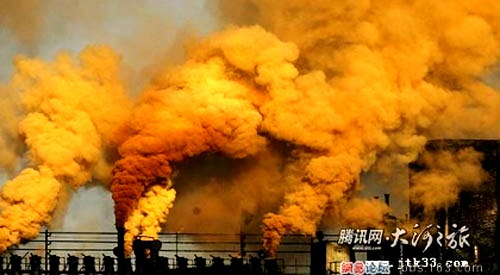
Click here to make an online donation to the Institute of Public and Environmental Affairs. Even $1 can help.
Sony, Pepsi, Walmart, H&M, Nike, Motorola, HP, and Apple are among thousands of corporations that a Chinese NGO, Institute of Public and Environmental Affairs (IPE), has leaked as being major pollution sources in China. They have forced hundreds of corporations to explain why their practices violate China’s pollution laws and made dozens clean up their act. Many of these companies now use IPE’s website to monitor their pollution. It was not until the early 2000s, when China’s government decided that access to factory pollution data and environmental information is a public right. IPE has taken advantage of this law to force corporations to eliminate pollution. “It is the only NGO in China to have created a comprehensive database of environmental violations” (Lee, et al).
This NGO is run by merely seven people in a converted office, on the 6th floor of a Beijing apartment building (Lee, et al). The man who heads it is Ma Jun, named as the world’s 100 most influential persons by Time magazine in 2006, formerly was an investigative journalist at the South China Morning Post. He and IPE have the complicated job of monitoring pollution in China, but he does this with the help of many individuals and NGOs (including Green Anhui, NRPD, Friends of Nature, Green Beagle, Environmental Protection Commonwealth Assoc., and many more). IPE was the first to create a real-time water pollution map in China. “To protect water resources, we need to encourage public participation and strengthen law enforcement. In some places, polluting factories and companies are being protected by local governments and officials,” he says on his Facebook page.
With a small budget of about one million yuan annually (US$147,000), this tiny NGO focuses on “shame and blame” pressure tactics on mainly multinationals (most of the violators on IPE’s list are domestic companies, but they tend to be more dismissive about environmentalism) (Lee, et al). Ma Jun, using his well-honed investigative journalist skills, exposes to the world the devastating pollution and humanitarian breaches of these corporations. In turn, the public gets furious, some protest, others boycott and this makes the companies lose business (decreased demand, customer and employee loyalty (they can lose some of their “cream-of-the-crop,” smartest employees)), so it gives them the incentive to change their unethical polluting practices.
Most corporations ignore IPE’s notifications of environmental breaches for as long as possible. For example, Apple (as discussed extensively in this blog) ignored IPE‘s complaints for months until humiliating headlines, such as “Apple Rotten to the Core,” about the corporation’s pollution scandal were reported throughout the world, had social media and the public on fire. However, other companies (who with bad track records of corporate scandal have learnt from their lessons), such as Walmart and Nike, embrace IPE as “a partner in improving their environmental management of their Chinese supply chains” (Lee, et al). “The IPE Web site provides a really good platform for us to reduce the risk of environmental violations,” says May Qiu, Nike‘s health, safety, and environment manager for Asia (qtd. from Lee, et al).
With so much outsourcing from China, it is hard for these large corporations to keep track of all their vendors. For example, Walmart has more than “50,000 suppliers there” (Lee, et al). Thus, many of them use IPE to keep a watchful eye on their suppliers’ environmental records.
Click here to make an online donation to the Institute of Public and Environmental Affairs. Even $1 can help.

Thank you! Very important website